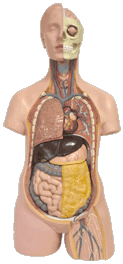At WiseGEEK, we're committed to delivering accurate, trustworthy information. Our expert-authored content is rigorously fact-checked and sourced from credible authorities. Discover how we uphold the highest standards in providing you with reliable knowledge.
What is Photopheresis?
Photopheresis is a technique which is used to treat the patients with blood conditions such as T-cell lymphoma. It is also known as extracorporeal photopheresis, referencing the fact that the blood is treated while it is out of the body, with the assistance of a specialized machine which takes blood, separates out the components being treated, treats them, and then delivers them back into the body. This medical term should not be confused with photophoresis, a phenomenon studied in physics.
When a patient is treated with photopheresis, the blood is run through a machine which exposes the blood to light. Medication the patient has taken before the procedure has bound to molecules of interest, which respond to the light when they are exposed. In the case of T-cell lymphoma, the rogue T-cells are targeted in a way which cripples their DNA, so that the cancerous cells cannot keep forming.

There are other potential applications for photopheresis; as long as molecules of interest can be identified and tagged with medications which bind to them and increase light sensitivity, the technique could potentially be used to neutralize other types of hazardous cells. Photopheresis is sometimes used to treat or prevent graft versus host disease, address some autoimmune conditions, and in the treatment of other medical issues which involve the blood.
This procedure takes place in a medical clinic or hospital where the patient can be connected to a machine which performs photopheresis and monitored during the procedure by a nurse. The length of the procedure can vary, with times around three to four hours being typical. While photopheresis is supposed to be painless, sometimes patients complain of dizziness, chills, and other symptoms related to the change in blood volume which occurs during the procedure. Cramping in the extremities can also occur. Side effects should be reported to a nurse, who can make the patient more comfortable and identify signs of more serious complications which may require intervention.
After a photopheresis procedure, patients are encouraged to stay out of the sun for at least 24 hours, because they will have an increased sensitivity to sunlight until their bodies have a chance to fully process the medication used during the procedure. If a patient must be in the sun, protective garb and sunscreen should be worn, along with sunglasses to protect the eyes. Additional recommendations may be given to patients with specific conditions which require extra care.
AS FEATURED ON:
AS FEATURED ON:










Discuss this Article
Post your comments